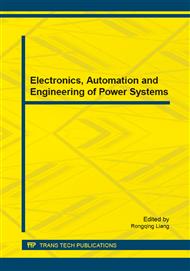p.3
p.8
p.14
p.18
p.22
p.27
p.31
p.40
Sound-Localization System
Abstract:
The system included a sound module and four audio receivers. The frequency of sound module was 500 Hz, and the duration was 1 second. The four audio receivers took different time to pick up the sound from sound module. Subtractors converted the time lags between every two receivers into phase difference. The hyperbolas were established by calculating the digital signal which was transformed from phase difference.
Info:
Periodical:
Pages:
18-21
Citation:
Online since:
February 2015
Keywords:
Price:
Сopyright:
© 2015 Trans Tech Publications Ltd. All Rights Reserved
Share:
Citation:


